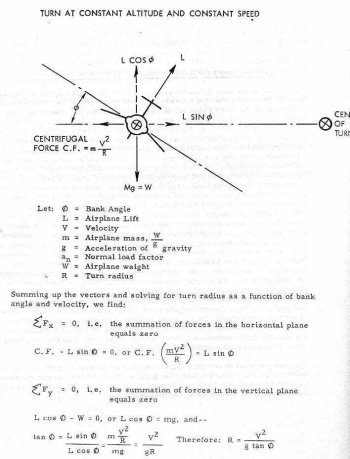I did not say that you can do aviation without using math, but math doesn't determine that high aspect ratio wings have greater lift coefficients than low aspect ratio wings. Math can tell us pressure distribution and flow conditions over a wing, but it does not determine what those conditions are, how they are, or why they are. What it comes down to is that simply discussing force diagrams won't tell you what is causing those forces or vector changes. That's where the debate is. We simply don't know how the J-20 performs because we don't know the HOWS and WHYS of the design without more complex instruments.
You know i hate discussions where ignorance and speculation is presented as facts.
Any simulation is math, any physical phenomenon is quantifiable, here all the discussion is sterile and stupid, what makes an aircraft turn is the total lift it generates with regards its weight speed and banking angle
see the equation and stop this stupid argument, see the equations, no equation is given aircraft has canards or not, it simply gives you speed banking angle Tan and gravity, the rest is pure non sense.
The turn rate always will be given in math expressions and are these factors what matter regardless the aircraft is a fighter, a strike aircraft or an airliner, it does not matter it has canards or not or it is tailless.
The configuration only matters to know at what speed and altitude it works better, 5th generation aircraft are designed for Mach 1.5 cruise speeds which forces a limit in their agility at Mach 0.9 thus they need thrust vectoring to fix their limits at lower speeds
question for you
why J-20 changed the shape of the LEX of its wing?
If you say you do not know, i just just recommend you google a bit about the F-16 aerodynamics and you will find the answer, the reason is not as complex as you think, in the same way the F-18E changed the shape of its LEX, the reason lies simply in what things do compromises between lift and low pressure vortices and drag.
simulation is not what you think, pretty much all designers do it before launching their projects.

